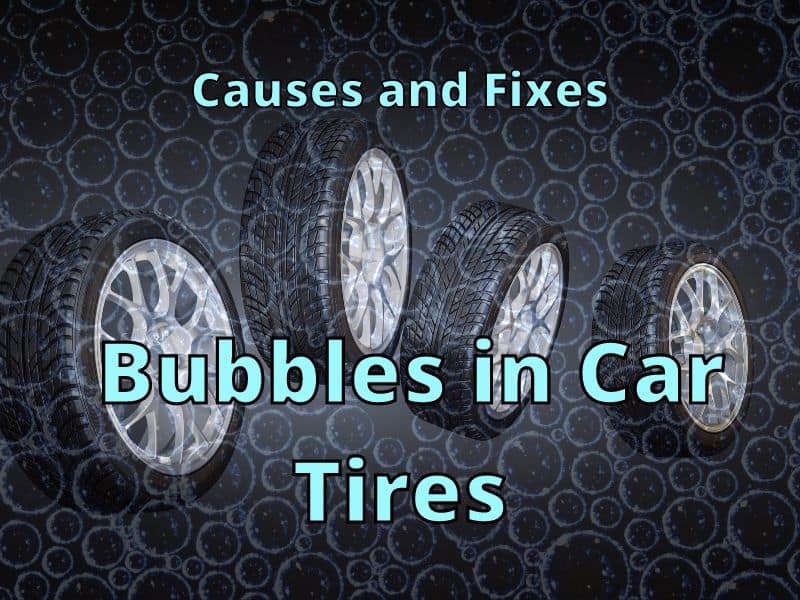A tire bubble may seem like an oversight to the untrained eye, but it can be detrimental in the long run. Tire bubbles require instant solutions; otherwise, they can cause car tires to pop, leading to road accidents, casualties, and fatalities (in extreme cases).
Bubbles can be caused on the tire tread and the tire sidewalls. Here are the ten major causes of bubbles in car tires:
- Poor Road Condition
- Excessive Weight
- Railroad Crossing
- Driving with a Flat Tire
- Under-Inflated Tire
- Manufacturing Errors
- Detached Sidewall Layers
- Low Temperature
- Worn Out Tire Cover
- Impact with Curb
According to the National Highway Traffic Safety Administration (NHTSA), around 11,000 car accidents in the United States are caused by tire failures every year. Many of them were the result of tire bubbles. The remainder of this article will discuss bubbles in car tires, their causes, and preventive measures that can be taken to prevent them and future tire failures.
Types of Tire Bubbles
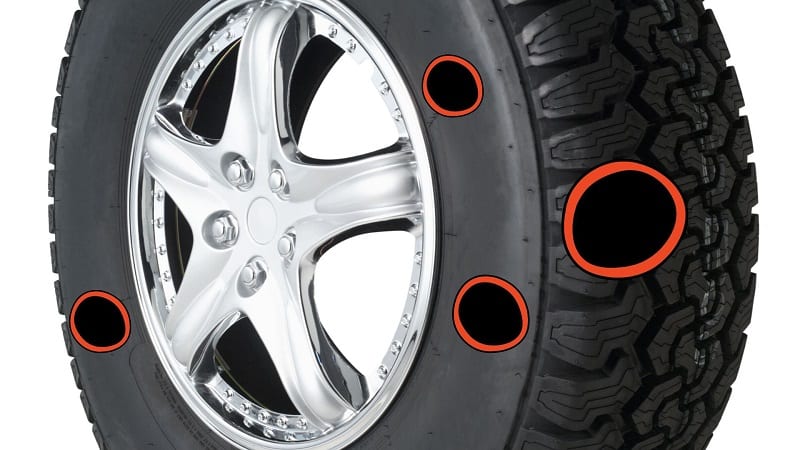
There are two types of tire bubbles: bubbles on the tire’s sidewall and bubbles on the tire tread.
- Bubbles on Tire Sidewalls – A car tire bubble on the sidewall is a protrusion from the tire’s sidewall that is the result of leaking air from within the tire into the tire’s body.
- Bubbles on Tire Treads – A car tire bubble on a tire tread is a protrusion on the tire tread, which occurs when one of the steel belts that go around the tire’s circumference ends up underneath and/or outside the tire tread. When a tire tread bulge forms, a noticeable “bumping” happens while driving.
Bubbles on tire sidewalls and bubbles on tire tread have one difference: a tire bubble on the sidewall is not evident while driving except for when you inspect your tires. In contrast, bubbles on tire treads become noticeable due to a particular rhythmic “bumping” while driving.
Many individuals come across tire bubbles daily, and they take them lightly without realizing how dangerous these things can be. In fact, it would be better to have a flat tire than to have a bubble on it.
10 Causes Of Bubbles in Car Tires
You may notice bubbles in your car tire sidewall if you check for protrusions or mismatched bumps on the sidewalls of your tire. However, the little bulge on the tire is the earliest stage of a tire bubble. Over time the bubble becomes larger, making it more visible.
There are many reasons why these little bulges—which eventually become bubbles—appear in car tires. The following are the ten main causes of car tire bubbles:
1. Poor Road Condition

Driving on roads with speed bumps, potholes, and any other obstructions or irregularities causes damage to the plies of a car’s tire. These irregularities eventually lead to the separation of the tire layers. Most drivers aggressively approach potholes and speed bumps, especially when driving on the road they are not used to and do not know where the cracks and bad spots are.
Constant encounters with these speed bumps and potholes eventually lead to tire bubble formations. If you end up traveling down roads in poor conditions, it is highly recommended that you check your car tires for small bulges after taking such routes.
2. Excessive Weight
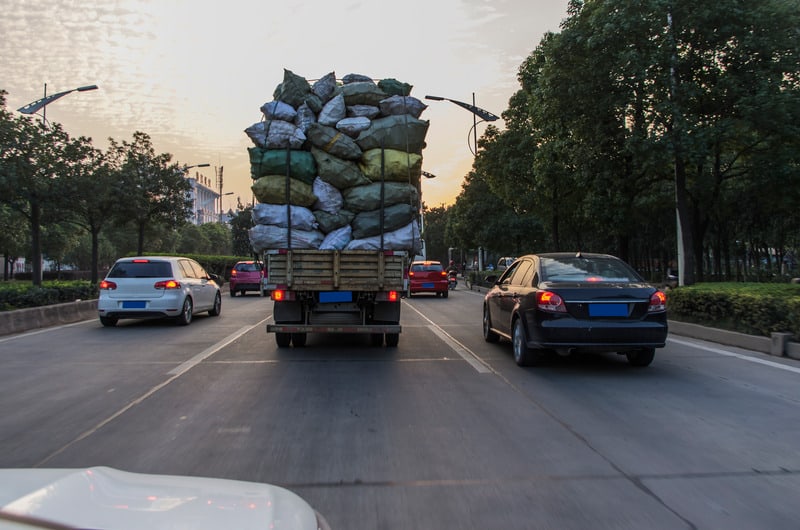
If your vehicle ends up carrying more weight than it should, it could lead to the development of bubbles on your tire, especially when this occurs repeatedly. If your car is used to transport goods, it is important to be mindful of your vehicle’s payload per trip; otherwise, your tires bear the consequences.
3. Railroad Crossing
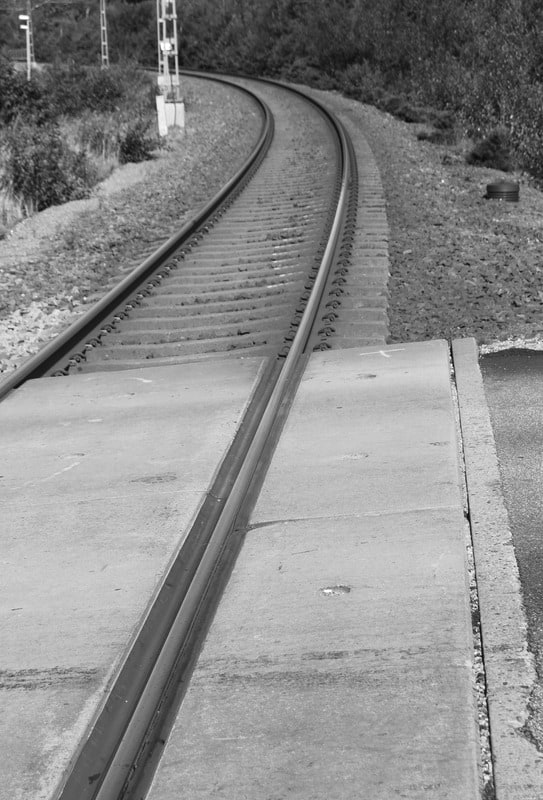
Sometimes, motorists travel via roads with railway tracks across them. If a driver takes the “railway” path daily, maybe on his way to and from work, for example, over time, the tires of his car would undoubtedly develop bumps, which would then grow into bubbles.
4. Driving With a Flat Tire

Flat tires may occur at unexpected times. Some motorists often make it a goal to fix flat tires by heading to the nearest car shop to get it vulcanized. In contrast, others drive their vehicle to their desired destination regardless of the tire’s condition, making promises to get it repaired at a later time as long as the tire is not quickly losing significant amounts of air.
However, driving with a flat tire gives room for tires to come in contact with foreign objects, which results in the tire being pressed against its rim, damaging the internal liner and forcing air leakage into the tire’s body and eventually resulting in the development of bubbles.
5. Under-Inflated Tire

Under-inflated tires develop excess heat, which causes the collapse of the tire’s intermediate bonding adhesive and the eventual emergence of bubbles.
6. Manufacturing Errors
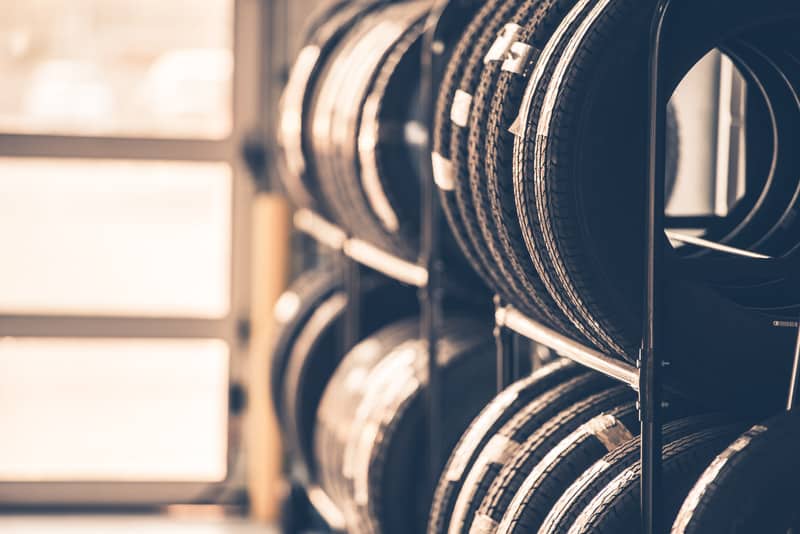
Not all tire bubbles come from impact and collision; on rare occasions, bubbles may form because of internal defects in the tire, which are usually from the tire’s manufacturer. In this case, it can be taken back to them depending on your warranty and their policies.
7. Detached Sidewall Layers
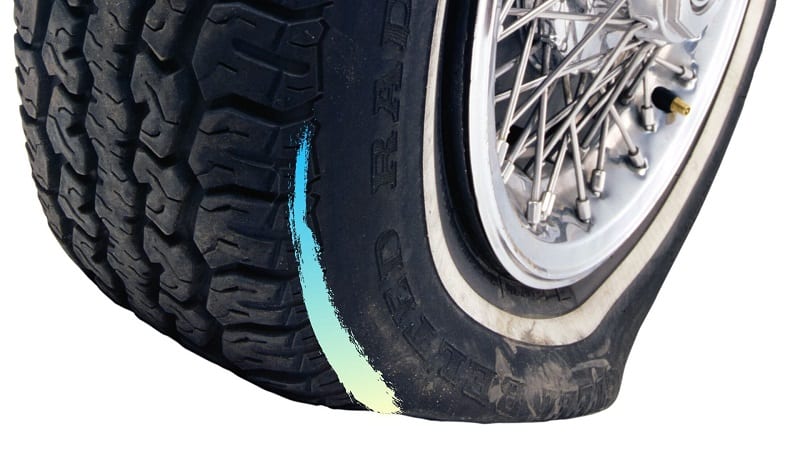
Tires are built by fastening several polyester cords with steel wires and rubber beds using an adhesive. The tire will bubble when the layers get disconnected from the tire sidewall. Several things can cause the layers to detach, like the inappropriate hardening of layers and the use of weak adhesives to fix layers.
8. Low Temperatures

Motorists in certain countries regularly experience bubbling of tires as a result of a temperature drop. Countries like Estonia, Canada, Finland, and Russia have low temperatures, which reduce the pressure inside car tires. If the reduced pressure in the tire is ignored, it will eventually cause the tire to bubble.
9. Worn Out Tire Cover
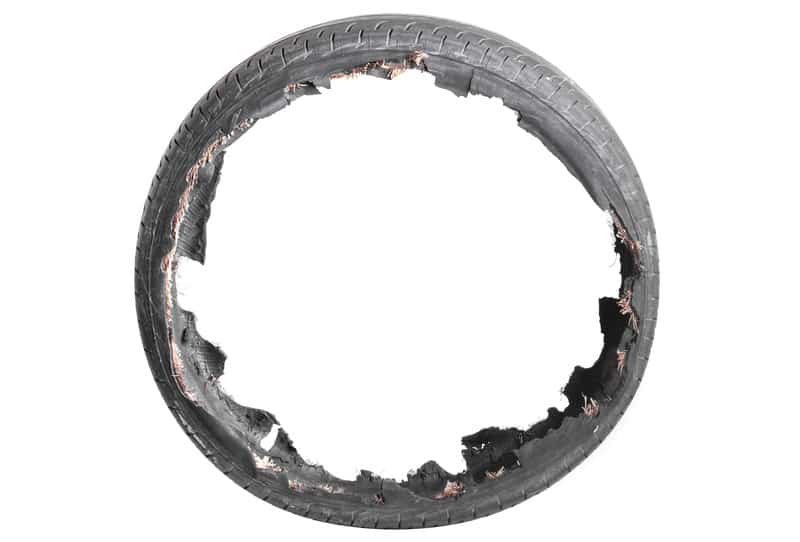
A worn-out rubber cover of a tire makes the tire susceptible to fracture whenever an impact occurs. This means that the tire’s metal skeleton is likely to dislocate. When the tire’s metal skeleton dislocates, this would eventually lead to bubbling.
10. Impact With Curb
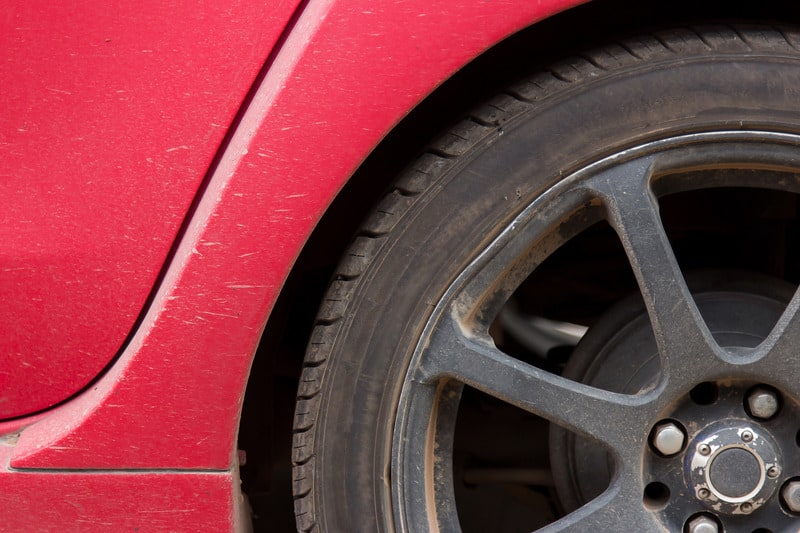
When your car tire collides with a curb, the curb and the tire wheel compress your tire, causing it to develop a bubble. Curb collision is one of the most common causes of tire bubbles.
Can Bubbles in Car Tires Be Fixed?
The emergence of bubbles in car tires is no minor issue; it should be taken seriously and instantly addressed. However, unfortunately, bubbles in car tires are unfixable. The only solution for a tire bubble is the immediate replacement of the affected tire.
It is a good idea to replace all four tires while replacing an affected tire. This will make sure any irregularities are delineated.
How Much Does it Cost to Replace a Bubbled Tire?
Damage caused by bubbles is unfixable due to the failure of the tire’s internal structure. Replacing a bubbled tire depends on the car tire you require. It can cost around $200 to $650 per tire.
If you would like to cut costs, it would be beneficial for you to purchase road hazard insurance. Road hazard warranties cover flat tire damages caused by several things like nails and bulges; this becomes very useful if you reside near construction zones.
The warranty will allow you to receive a free replacement for the affected tire(s). The extra bucks you end up spending would certainly be worth your while and save you unnecessary expenses in the future.
Do Tire Warranties Cover Tire Bubbles?
The price of getting a bubbled tire replaced is dependent on the tire’s warranty. If a bubble on your car tire is developed due to the manufacturer’s errors, then the manufacturer would likely replace it for you cost-free.
Having your tire manufacturer replace your tire is dependent on your tire’s lifespan with your car because several warranties do not go beyond four to six years.
Initially, when a tire bubble occurs, you may impulsively hold the manufacturer responsible. However, road damage is discernible due to rubber shavings within the tire. You still have the option of getting assistance from a purchased road hazard warranty if the bubble is caused by inadequate maintenance or road hazards.
Can You Replace Just One Tire?
It is advisable to replace all four tires in the case of a bubble. But, if you cannot afford to replace all four, the replacement should be paired alongside the tire with the second-most tread depth. Both adjacent tires should be fixed on your car. Nevertheless, it is still best to replace all four tires or at least two. Replacing all four will ensure your tires are rotated on schedule.
Replacing all four tires while replacing a bubbled car tire also saves unavoidable future costs. This is because it is very likely that the “unaffected tires” have little bulges that may not be visible at the time, so a stitch in time will save in the long run.
Some tires come with warranties that allow you to take your tire back for replacements in the case of damages sustained on the road or a manufacturing error. However, terms and conditions apply.
How Can Car Tire Bubbles Be Prevented?

Since the bubbles that emerge in car tires cannot be fixed, the next best thing you can do is prevent them from happening in the first place.
As a car owner, you are required to check your car regularly, especially before you drive. While going through your regular car checkups, look for any bubbles on the sidewall of your car tire(s). A bubble discovery may leave you perplexed and worried, although having a bubble on your car tire is not a cause for too much worry, as there are several ways to handle and prevent them.
Let’s discuss seven ways bubbles in car tires can be prevented:
1. Drive With Caution
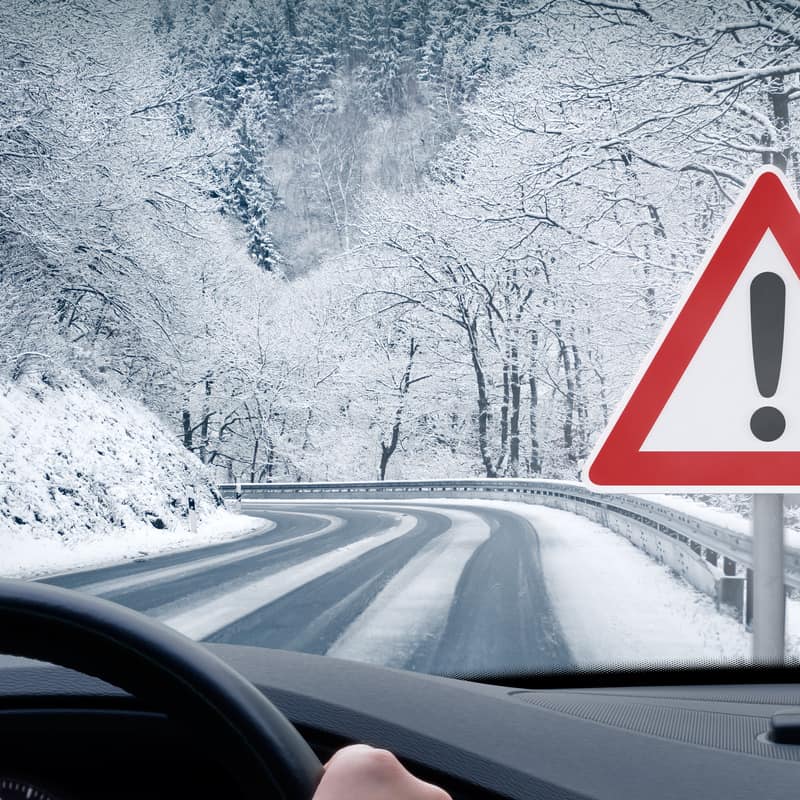
This is the foremost preventive measure against car bubbles. Although it may be obvious, it cannot be overlooked as several causes of bubbled tires are due to the driver’s driving style. Do not approach speed bumps at high speed, avoid colliding with curbs while parking, and endeavor to keep your vehicle going while making a hard turn.
2. Frequently Check Your Tires
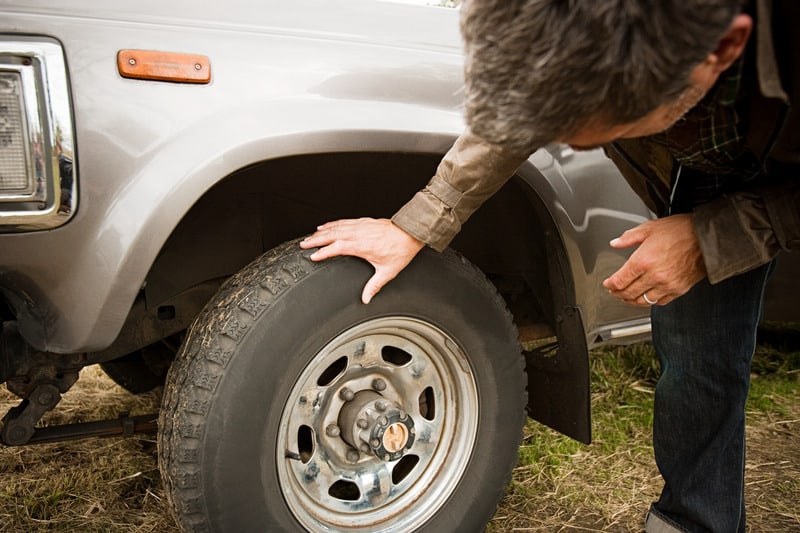
Before using your car daily, it is important that you check your car to ascertain if everything is in order. Check your tires constantly, especially if you go through rough routes daily. Frequent tire checkups allow you to notice bubbles in their early stages. Additionally, checking your tires helps you acknowledge avoidable areas that pose damage to them.
3. Update Tire Pressure

Motorists in countries with low temperatures tend to have their tires lose pressure due to the weather. If you live and drive in such regions, endeavor to update your tire pressure whenever you notice some semblance of deflation. Aside from living in cold regions, some folks have a nonchalant habit of driving with deflated tires; if you are guilty of this, change that lest you spend unnecessary money on tire replacements.
4. Regularly Service Your Car
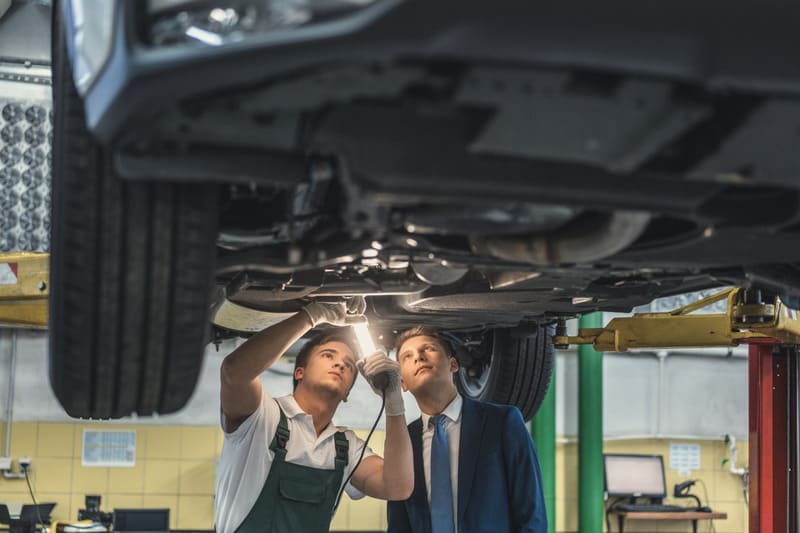
Having your car serviced regularly is a great preventive measure. This checks your suspension and other parts, making sure that your tires encounter evenly distributed impacts across your vehicle while you drive.
5. Avoid Potholes
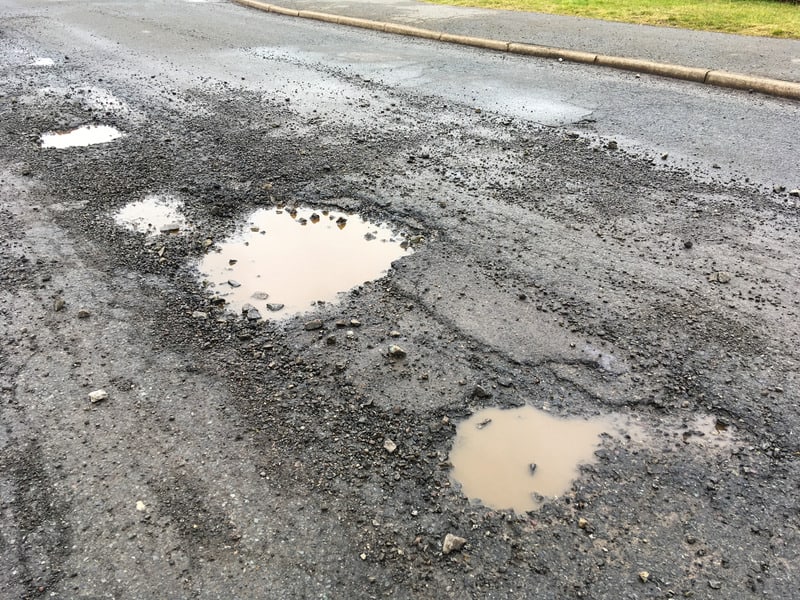
Potholes are one of the major causes of bubbles in car tires. While driving, endeavor to steer your way around potholes. If you can avoid driving through routes with potholes, then you should do so by all means. If you are caught in a fix where you cannot seem to avoid potholes, then drive over them very carefully.
6. Do Not Drive With a Flat Tire
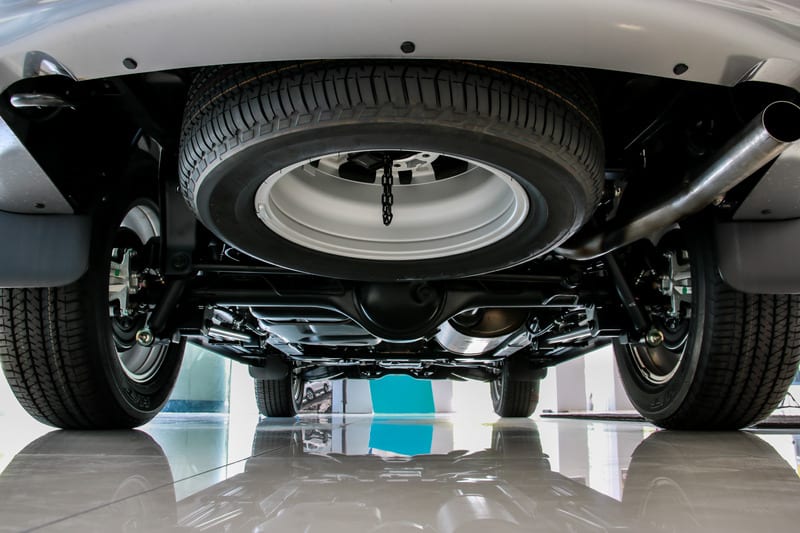
Most motorists carry on driving their vehicles when they have a flat tire. Flat tires should not be driven with, no matter how minor they may seem, as this would cause the tire rims to pinch the tires, leaving them with bulges. As soon as you notice a flat tire on your vehicle, park and replace them with your spare tires, or if a car shop is close by, you can have them inflated and/or patched.
7. Weight Control

Motorists who utilize their cars for the conveyance of goods and services do not realize the damage it causes to the tires. When a vehicle is constantly loaded, it compresses the rim against the tires; this could lead to a number of issues for your tires aside from bubbles.
If you use your car for the transportation of goods, endeavor to keep the weight limit per trip at a considerable level. This will save you a lot of money.
Frequently Asked Questions (FAQs) About Car Tire Bubbles
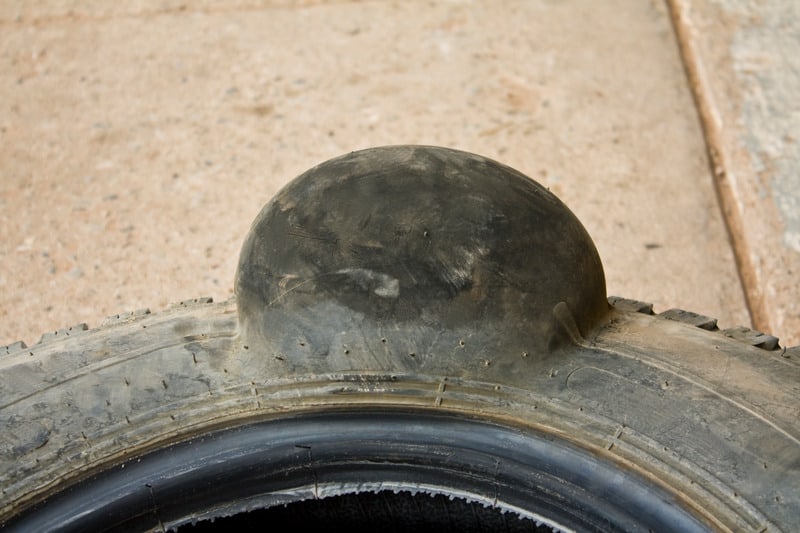
The following are some of the most common questions drivers have about car tire bubbles:
Can You Drive a Car With a Tire Bubble?
Although bubbles on car tires do not inhibit your car from driving, it is very dangerous. A bubbled tire is literally a ticking time bomb. The only thing holding bubbled tires from blowing out are some layers of nylon, sidewall rubber, and polyester. Yes, you can drive a car with a bubble, but you shouldn’t unless you want a blown-out tire, which can lead to fatal accidents.
Is It Safe to Drive with Bubbles In Your Car Tires?
Driving for long distances with a bubbled tire is very risky as the tire is susceptible to blowing out at any point in time. Your major concern should be replacing the affected tire as soon as possible. It is possible to drive for a short distance to have the tire replaced but very unsafe for everyday usage.
How Long Can You Drive With a Bubble On Your Tire?
Several times in this article, it has been stated that when you have a bubbled tire, the most reasonable course of action is to have it immediately replaced. However, if you must drive regardless of the tire’s condition, you must not go beyond 35 miles per hour (MPH). In addition, while driving, avoid hard braking and acceleration, or else you add stress to your tire.
Is a Sidewall Bubble Dangerous?
Yes. If you notice a sidewall bulge while you are at home or while your car is parked, then it is not dangerous.
However, sidewall bubbles cannot be considered safe because your tire is no longer protected from popping from road pressure. So, a sidewall bubble is not dangerous when your car is stationary, but the minute you decide to start driving with it, that is an entirely different situation.
Conclusion
Bulges and protrusions on car tires are recurrent in vehicles daily. Most people notice these little bubbles in their tires but do not take them seriously because they are unaware of the danger it poses to them, their vehicles, and everyone around them (especially on the road).
Take the causes of tire bubbles in car tires into consideration to avoid them from occurring again, and if you have yet to experience any bubbles on your tires, make sure you take preventive measures to save your life and money.
References:
https://wheelzine.com/what-causes-bubble-in-automobile-tire
https://www.carbibles.com/tire-bulge/ – Update: website unavailable
https://www.tires-easy.com/blog/pop-dont-blow-the-tire-bubble/ – Update: page unavailable
https://www.nexentireusa.com/files/documents/Tire_Bubble_Q_A1.pdf
https://www.actiongatortire.com/what-to-do-if-you-have-a-bubble-in-your-tire/

